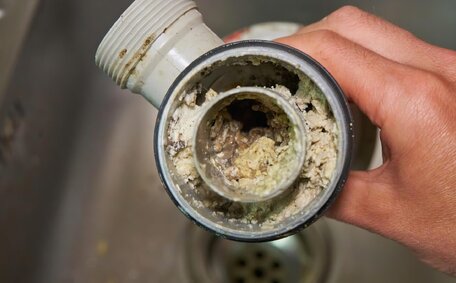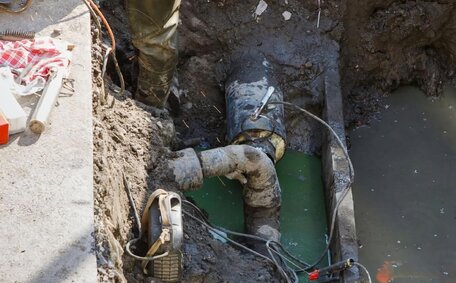Introduction to Pipe Relining
Trenchless pipe lining has become an increasingly popular modern pipe repair method. It involves inserting an epoxy resin lining into existing pipes to create a smooth, protective barrier inside damaged pipes. This no-dig approach offers several advantages over conventional methods for repairing damaged pipes:
- Minimal disruption - The process requires just an external access point on the pipe, avoiding excavation through walls, floors, or landscapes.
- Cost-effective - Pipe relining is more cost-effective compared to complete pipe replacement.
- Longevity - Epoxy linings can extend the lifespan of pipes by 50 years or more.
Despite its advantages, numerous myths about the pipe relining process persist. This article aims to address and debunk myths about trenchless pipe relining, providing homeowners with accurate facts to make informed decisions about their pipe solutions.
Myth: Pipe Relining is Expensive
A prevalent misconception about pipe relining is that it’s costlier than traditional pipe replacement methods. Many homeowners assume that trenchless pipe repair, in contrast to traditional methods, must be an expensive undertaking, giving rise to several pipe lining myths. However, the opposite is often true.
In most cases, pipe relining provides substantial cost savings over full pipe replacement. The access points drilled into the pipes are small and cause minimal surface damage. This radically reduces labour time and expensive restoration work.
Epoxy resin lining eliminates the need for extensive excavation, preserving floors, walls, and landscaped areas intact.
A properly installed pipe lining can last upwards of 50 years before requiring repair. Should problems emerge, the existing epoxy lining can simply be extended, rather than replacing entire pipe sections. Over the long run, this helps homeowners end up avoiding recurring costs of future pipe installations and repairs.
Homeowners weighing up trenchless sewer repair methods could save thousands in the long run. Accurate cost comparisons reveal that, over time, trenchless pipe relining is significantly less expensive than traditional repair methods involving excavation.
Fact: Pipe Relining is Cost-Effective
A detailed assessment of expenses shows that trenchless pipe lining is a cost-effective choice for your plumbing, despite initial expenses. While the upfront costs may be more than traditional pipe replacement methods, it’s becoming more common to see the long-term savings outweigh these initial investments.
A quality pipe lining can last 50+ years with minimal need for maintenance. Avoiding expensive future repairs down the track delivers major savings. There is also far less labour time involved since no excavation or restoration is required, further reducing expenses.
According to studies, pipe relining costs anywhere from 30-50% less than traditional pipe replacement over the long term. Factoring in the durability and longevity of trenchless epoxy linings, it becomes clear that pipe relining provides excellent value for money.
Myth: Pipe Relining Doesn’t Work on Old Pipes
There is a common myth that pipe relining is only suitable for newer pipe systems and won’t work effectively on older pipes. This misconception stems from the belief that once pipes reach a certain age, they are too far deteriorated to be salvaged and must be fully excavated and replaced.
However, this neglects modern pipe relining capabilities. Contemporary trenchless repair techniques permit the introduction of epoxy resin linings into sewer lines that are over a century old. Even severely damaged pipes can typically be rehabilitated rather than replaced, as age seldom presents a barrier to relining.
An experienced plumber will first perform a camera inspection on the pipes to assess their condition. Provided the fundamental structure of your sewer line remains intact, the advancement in relining technology can proceed to restore it. The CIPP pipe lining moulds itself to irregularities in old pipes, smoothing out cracks, holes and corrosion damage.
In many cases, pipe relining is the optimal solution for ageing plumbing systems. Trenchless lining technology reinforces existing pipes for decades to come rather than destroying them. Homeowners concerned their old pipes are beyond repair can rest assured trenchless methods make restoration possible.
Fact: Pipe Relining Can Repair Old and Damaged Pipes
Contrary to common assumptions, epoxy pipe lining effectively mends old and damaged pipes, irrespective of their age or condition. Thanks to modern epoxy resins and lining technology, pipes over 100 years old and pipes that are severely corroded or cracked can often be salvaged rather than requiring full replacement.
The key fact that disproves this myth is that as long as the basic pipe structure remains intact, relining is possible. The adaptable epoxy lining that gets fitted into your pipelines is capable of snuggly adapting to existing old pipe networks, ironing out irregular shapes, fissures, punctures and other damage.
This dispels one of the myths about trenchless relining, making it an optimal repair method for ageing plumbing systems in particular. Rather than destroying pipes that have been in place for decades, pipe relining reinforces their integrity for many more years of service. So while old, deteriorated pipes may look beyond repair, pipe relining technology makes restoration extremely viable.
Myth: Pipe Relining Doesn’t Last Long
There is a myth that pipe relining only offers a short-term fix for various plumbing problems and that the epoxy lining will degrade quickly over time. This misconception likely stems from some poorly-done pipe relining jobs in the past that failed prematurely.
Executed properly by skilled plumbers, superior pipe lining offers impressive durability and longevity. Modern epoxy resins, which form the core materials used in pipe relining, can withstand decades of use, often exceeding 50 years of lifespan.
Pipe relining entails coating the insides of all your pipes with a pliant epoxy lining only a few millimetres thick. This lining then cures to form a smooth, watertight barrier. Quality linings are highly resistant to damage from root intrusion, corrosion, abrasion from water flow and more.
With proper installation, pipe relining transforms old, decaying pipes into nearly new pipes, restoring structural stability and flow capacity. Periodic inspections help safeguard your existing piping system against any rare failures. So no, pipe relining is not just a quick fix - when done properly, epoxy linings provide long-term solutions.
Fact: Pipe Relining Can Last 50 Years or Longer
It’s a common misconception, but the truth behind pipe relining’s longevity is that modern epoxy linings can easily prolong the lifespan of pipes by 50 years or more. When installed by certified professionals, trenchless pipe lining abides by stringent industry standards such as NSF/ANSI 61, signifying exceptional durability for residential plumbing.
The key fact is that high-grade flexible epoxy coatings are highly resistant to damage from abrasion, roots, corrosion and more. As the resin moulds tightly to existing pipes, it reinforces the integrity of the pipe infrastructure, restoring flow capacity and performance.
In the majority of cases, epoxy pipe relining transforms ageing, deteriorating pipes into like-new condition. Unlike traditional pipe replacement methods which must be repeated, pipe relining is a long-term, one-time solution that can provide 50+ years of reliable service.
Myth: Pipe Relining is Disruptive and Messy
A common notion that myths should be challenged is the one where pipe relining is seen as an extremely disruptive and messy process. Many homeowners envision extensive digging throughout their property, disrupted yards, and considerable damage from relining work.
In reality, Pipe relining stands as one of the least intrusive and cleanest plumbing repair methods available. Since it’s a trenchless technology that doesn’t involve any digging, pipe relining avoids almost all the disruption of traditional pipe replacement.
Aside from a temporary workspace set up outside and some noise during lining insertion, homeowners experience minimal interference with their daily routine. It spares floors and walls from demolition and preserves landscaping undisturbed. The process, a stark contrast to traditional excavation, takes just a day or two with full usage restored quickly after.
Trenchless sewer repair, therefore, results in notable time savings and less disruption compared to traditional pipe repair techniques. The trenchless process keeps your property protected while your pipes get upgraded.
Fact: Pipe Relining is a Non-Invasive Process
Pipe relining is a minimally invasive process that preserves the integrity of properties. Pipe relining necessitates only small access points, typically with holes of 15-30mm diameter drilled externally through walls. Pipe relining necessitates only small access points, typically with holes of 15-30mm diameter drilled externally through walls. Pipe relining sidesteps nearly all the disturbances associated with traditional pipe replacement due to its no-dig nature.
As opposed to methods where pipe bursting can cause extensive damage, trenchless pipe lining preserves floors, landscapes and other structures. Homeowners experience very little interference to their daily routine. This lack of destruction allows for fast repairs with less mess and hassle.
The only visible external evidence of the process may be a temporary workspace and the eventual small pipe access points requiring patching.
So while plumbing repairs often raise concerns over potential damage, pipe relining is a cleanly non-invasive solution. By reinforcing pipes from the inside out, it restores function and longevity without tearing up homes or yards.
Myth: Pipe Relining Uses Harmful Chemicals
There is a common myth that the epoxy resins used in pipe relining contain toxic chemicals that could leach into water supplies or endanger homeowners. This misconception likely arises from lack of public familiarity with new technology in pipe lining materials and processes.
In reality, pipe relining uses 100% NSF/ANSI 61-certified epoxy coatings that are rigorously tested and certified safe for potable water contact. These flexible thermoset plastic linings contain no BPA, phthalates or hazardous compounds that could pose health risks.
The curing agents used to set the epoxy lining also comply with health and safety regulations. Proper installation protocol by certified technicians ensures no leakage or contamination risks. The airtight epoxy barrier seals off any pipe corrosion and creates an inert layer separating water flow from the existing pipe walls.
So while understandable to harbour concerns, rest assured that pipe relining employs engineered, drinking water-safe materials closely monitored for quality control and environmental standards.
Fact: Pipe Relining Uses Safe, Durable Materials
Pipe relining utilises epoxy resins and lining materials that are rigorously tested and certified safe. The NSF/ANSI 61 certification indicates these materials meet health and safety standards for contact with drinking water.
The epoxy coatings contain no hazardous compounds like BPA or phthalates. Proper installation by certified technicians ensures homeowners can count on no risks of leakage or contamination. The airtight barrier seals off corrosion and prevents pipe contents from contacting existing pipe walls.
Thus, homeowners can be confident that trenchless pipe relining utilises exclusively safe, robust materials tailored for plumbing systems. Periodic inspections also help confirm linings remain intact over their 50+ year lifespan.
Conclusion: The Benefits of Pipe Relining
After exploring some common myths, it becomes clear pipe relining provides a reliable, long-lasting pipe repair solution. Pipe relining, by inserting an epoxy barrier into pipes, can extend their lifespan by over 50 years, circumventing the mess and upheaval associated with traditional replacements.
The primary advantages of trenchless pipe relining encompass:
- Cost-effectiveness - Internal pipe system renewal via relining is more economical over time than repetitive pipe replacements
- Durability - Durable epoxy linings within cast iron pipes endure for decades.
- Versatility - Suitable for all types of pipe materials and various damages
- Non-invasive - Avoids property damage from digging and demolition
- Rapid completion - Pipe relining is completed within 1-2 days and water service is promptly restored
Homeowners facing pipe issues, including those needing drain cleaning, should consider the substantial benefits of trenchless pipe lining as an effective repair solution. Epoxy barriers reinforce ageing piping systems for extended periods, facilitating a smooth, restored flow with minimal inconvenience.
For more details about pipe relining or to schedule an inspection, contact our plumbing experts or call 1300 349 338 to speak with our trenchless repair specialists.






